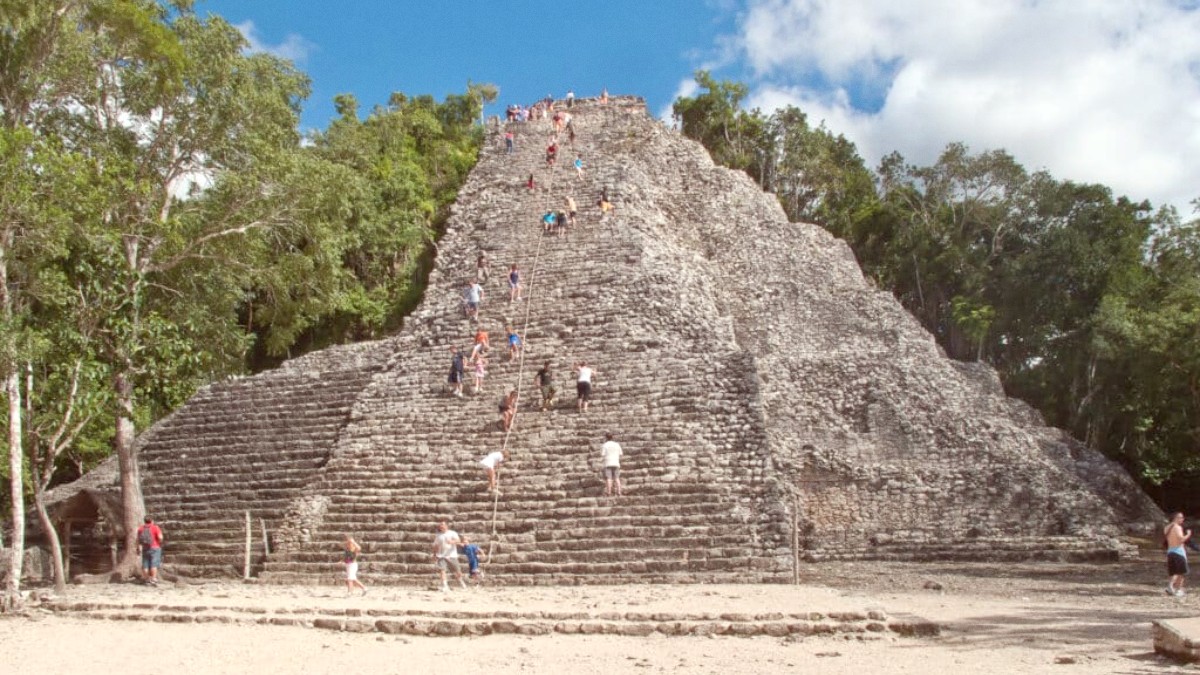
Yucatan Peninsula, Mexico
Several rewarding destinations sit within easy day-trip distance from Chetumal.
The stunning freshwater Laguna de Siete Colores, famous for mesmerizing shades of blue, is 30-40 minutes north. The Mayan site of Kohunlich, renowned for its Temple of the Masks, lies about 1 hour southwest by car. Calderitas, a relaxed coastal village, is just 15 minutes north. Corozal Town, Belize, sits across the border, about 30-45 minutes away.
Considering logistics for your excursions from Chetumal.
Organized tours simplify archaeological site visits, handling transport and entry, often with a guide. Independent travel presents more freedom for pace and itinerary, frequently at a lower cost, especially for easy-to-reach places like Bacalar.
Laguna Bacalar warrants a full day to fully enjoy its waters and boat tours. Many choose to stay overnight for sunset and sunrise. Kohunlich exploration may take a half-day. Combine it with Dzibanché and Kinichná for a full Mayan archaeology day.
The region around Chetumal presents stunning natural landscapes and unique ecosystems.
This protected area within Chetumal Bay dedicates itself to conserving the West Indian Manatee and its habitat. Boat tours are necessary for respectful observation.
While not a formal nature reserve, continuous efforts preserve this unique natural ecosystem. Eco-friendly activities are welcome.
The Rio Hondo, part of the Belize border, presents serene views. Coastal areas towards Mahahual present pristine Caribbean stretches and quiet beach experiences.
For pristine Caribbean beaches and world-class diving and snorkeling on the Mesoamerican Barrier Reef, travel north to Mahahual and Xcalak, approximately a 2-3 hour drive from Chetumal.
Manatees are present year-round in Chetumal Bay. Their sightings can be more common in certain seasons or times of day. Consult local guides for the best opportunities to observe them.
Beyond Chetumal's city limits, the region presents a wealth of cultural and historical sites.
These are significant Mayan sites west of Chetumal. They are less visited than popular ruins like Chichen Itza or Tulum, presenting a more immersive and tranquil experience. They feature impressive architecture and deep insights into Mayan civilization.
The area surrounding Chetumal stands predominantly rural, home to small Mayan communities. Direct tourist access to these villages is less common for independent travelers but can be arranged through specialized eco-tourism operators. This presents cultural exchange opportunities.
While not outside the city, Chetumal itself holds historical significance. Its reconstruction after Hurricane Janet in 1955 gives its architecture a distinct character. The Museo de la Maqueta Payo Obispo features the city's history.
While Mayan sites are a major draw, the cultural fabric also includes everyday life, markets, and local cuisine. Engaging with these aspects presents a cultural immersion.
No prominent pilgrimage sites stand in the Chetumal region. Religious tourism often concentrates on larger Catholic cathedrals or specific religious festivals in other parts of Mexico.
Pilgrimage activity mainly takes place outside the Chetumal region.
Larger cities in Mexico host significant Catholic pilgrimage sites.
Specific festivals throughout Mexico draw religious travelers.
Chetumal's location makes it a logical starting or ending point for longer regional travel.
This length permits deep exploration of the lagoon, including various water activities, cenotes, and lakeside relaxation beyond a single day trip.
Dedicate this time to serious beach relaxation, diving, or snorkeling on the Mesoamerican Barrier Reef. An ideal extension for marine enthusiasts.
For those open to international border crossings, these Belizean islands present a distinct Caribbean cultural experience with excellent snorkeling and diving.
Chetumal can are a starting point for an adventurous, multi-week exploration. This route might feature travel from Chetumal to Bacalar, then to archaeological sites like Kohunlich and Dzibanché, potentially continuing to Calakmul (in Campeche), Palenque (in Chiapas), and even extending to Flores (Guatemala) to visit the iconic Tikal ruins. This route is for those seeking a deep dive into Mayan history and jungle adventures.
A popular and comprehensive route might start from Cancun, move to Playa del Carmen and Tulum, then south to Bacalar and Chetumal. From Chetumal, you might then head west to Mérida, visit Chichen Itza, and loop back to Cancun for departure. This route combines beaches, culture, and ancient history.
From Chetumal, Belize City is accessible by bus, and from there, connections to the islands of Caye Caulker and San Pedro by ferry. This extends the journey into a distinct Central American experience with rich marine life and Caribbean culture.